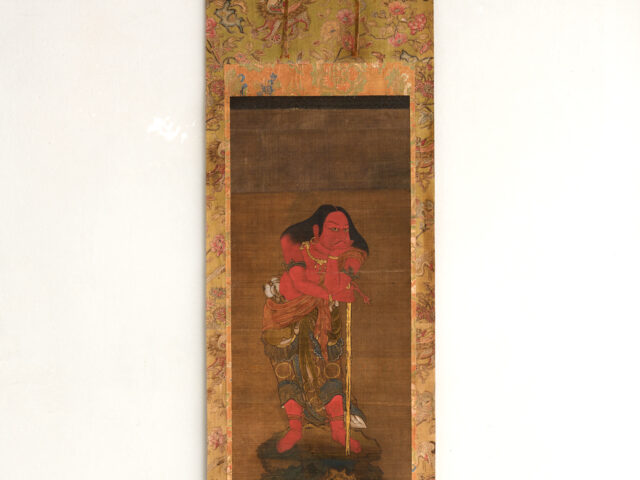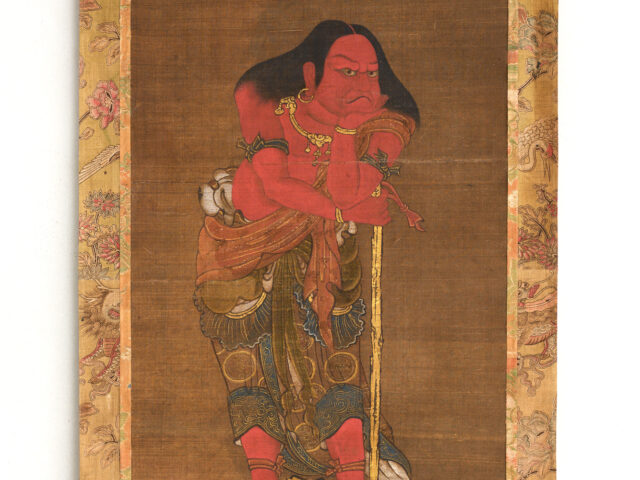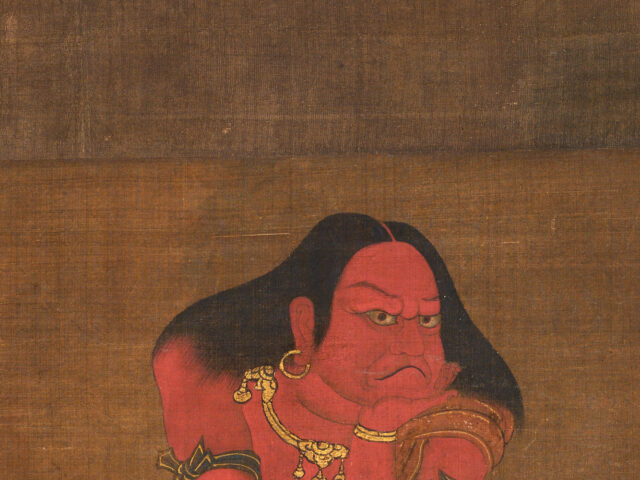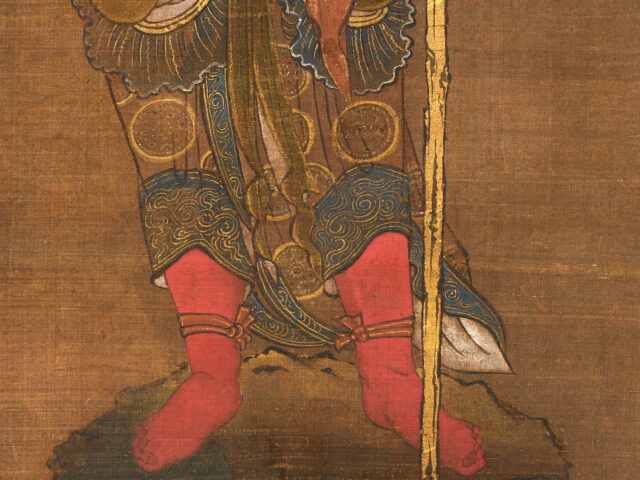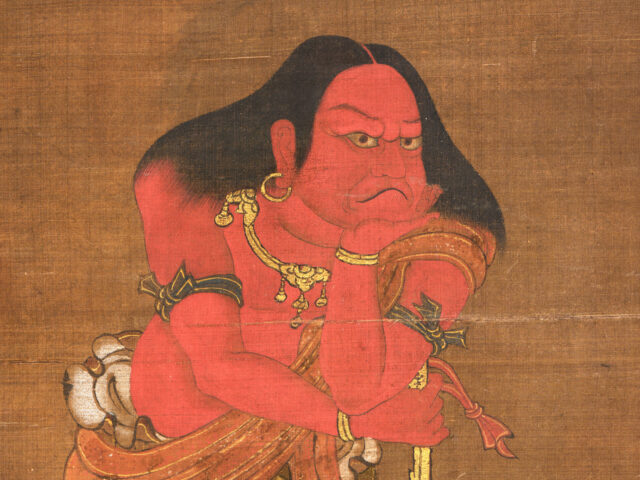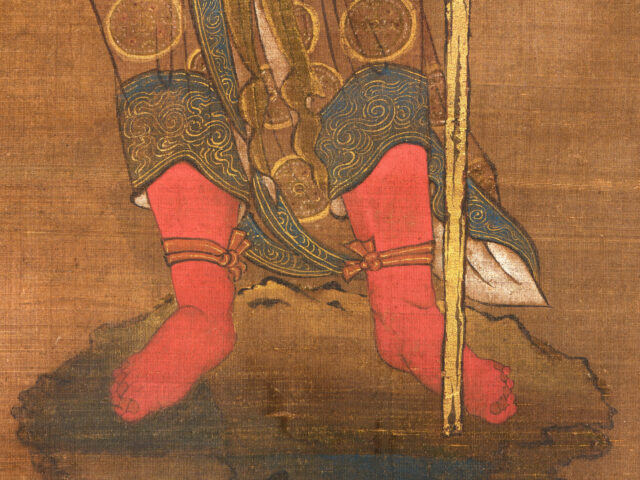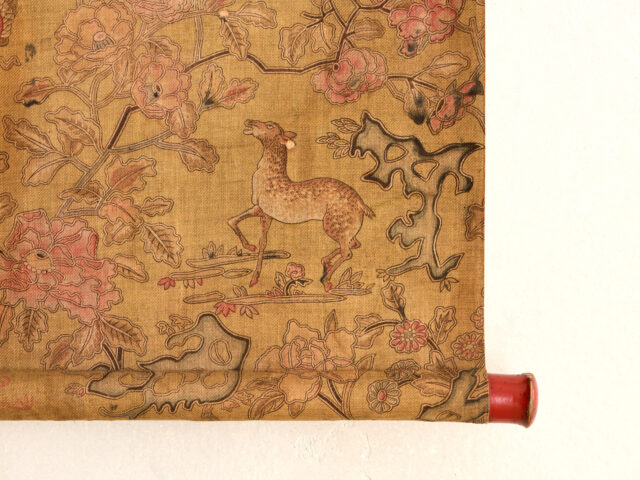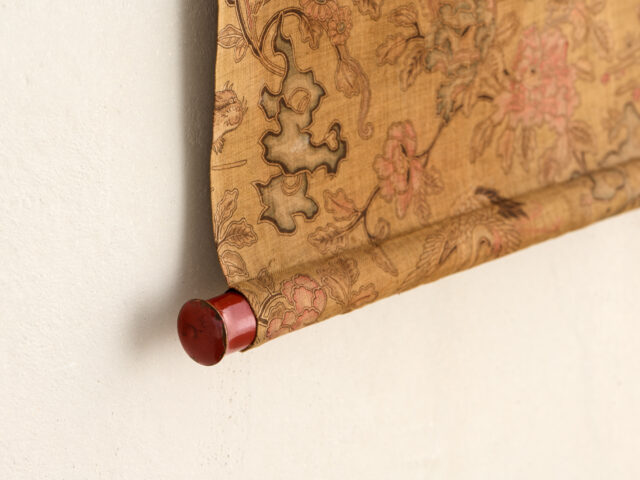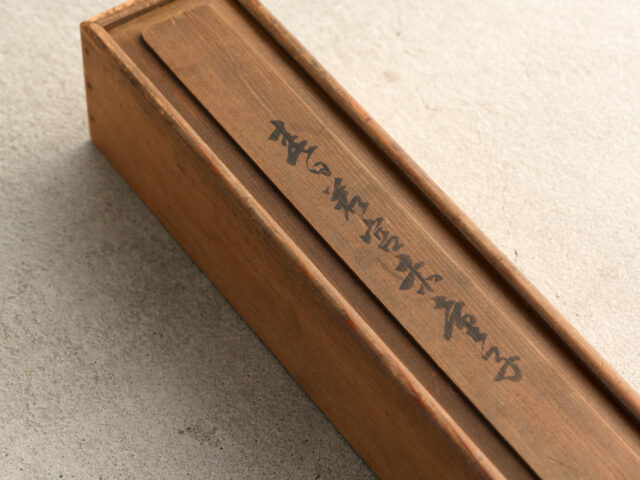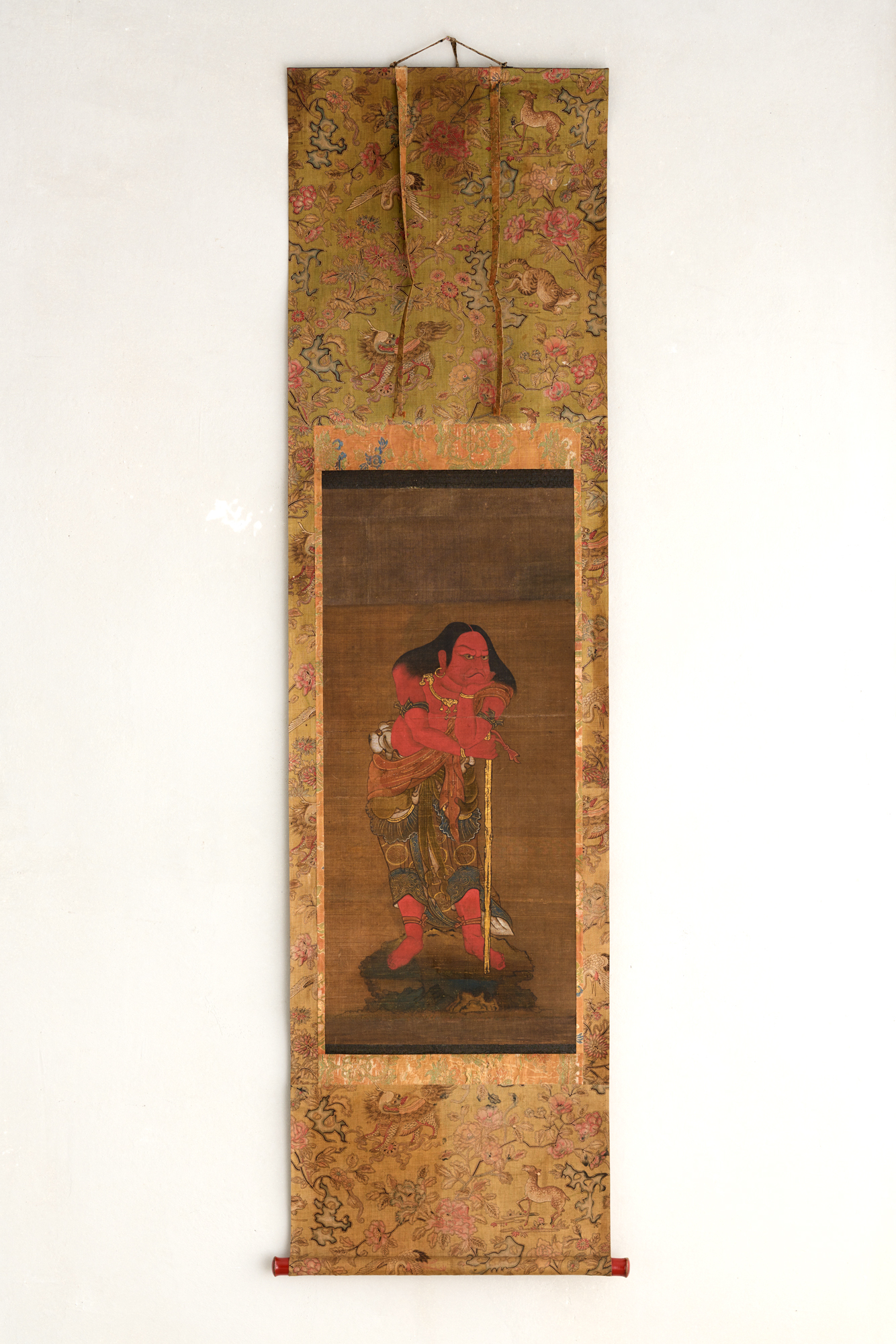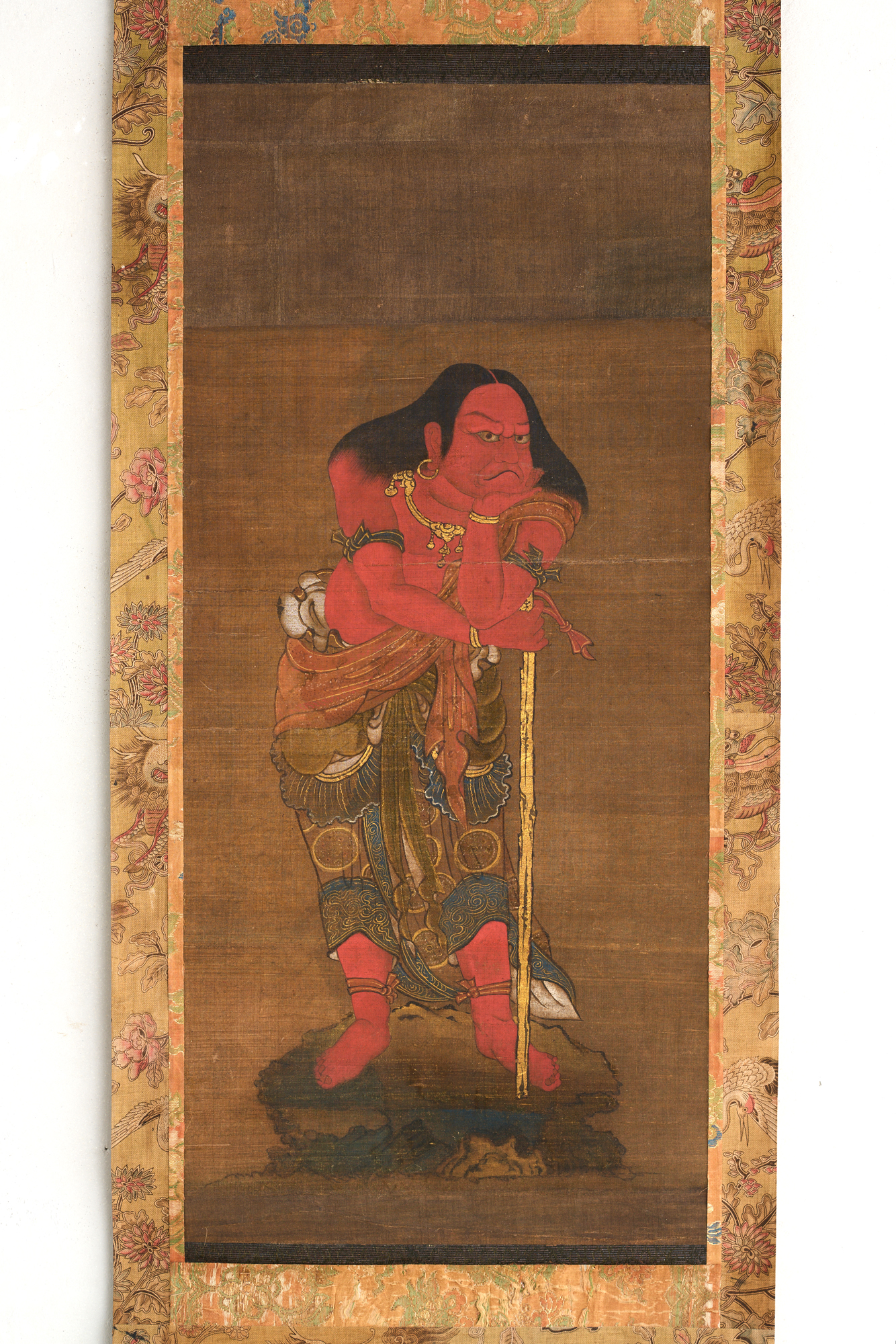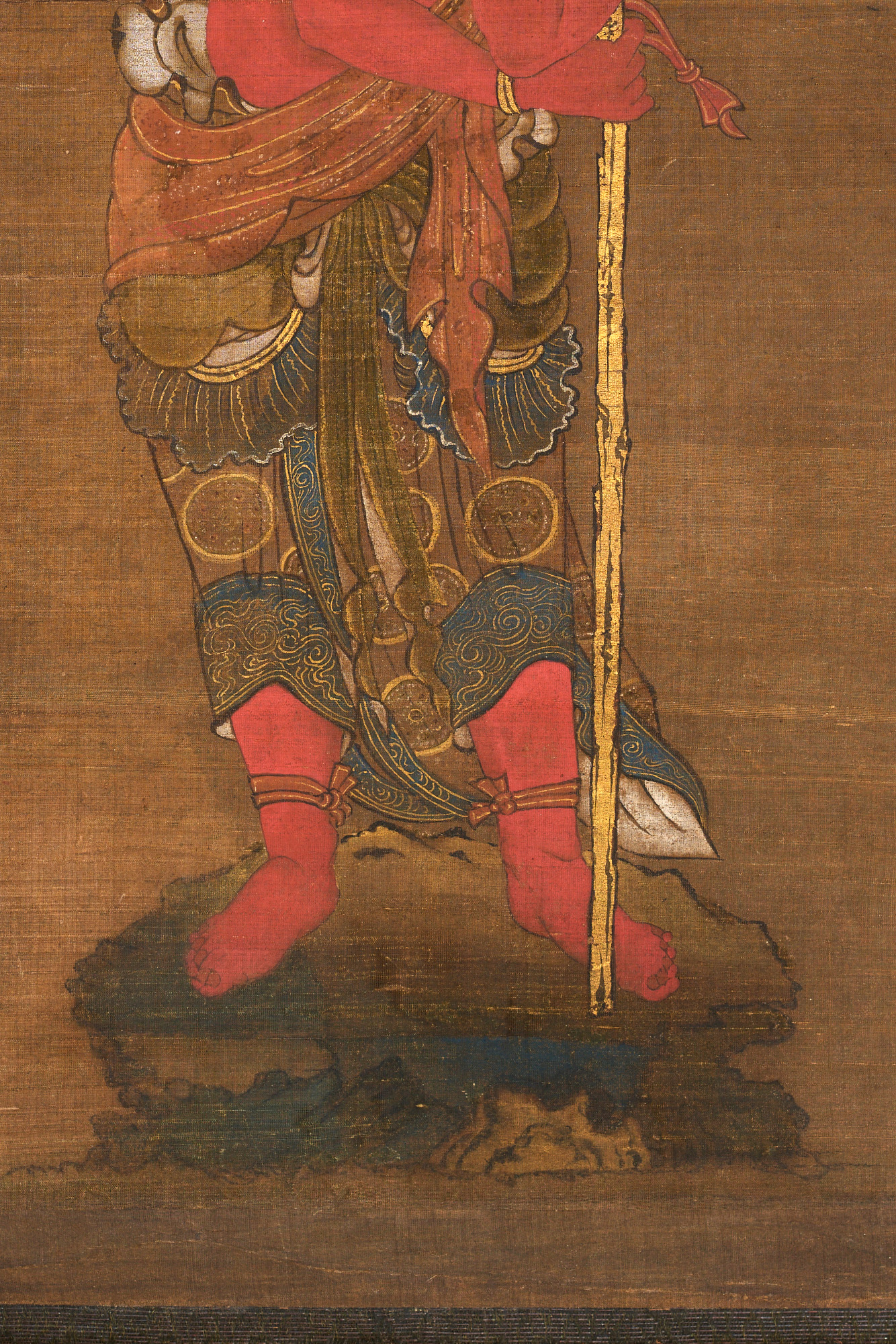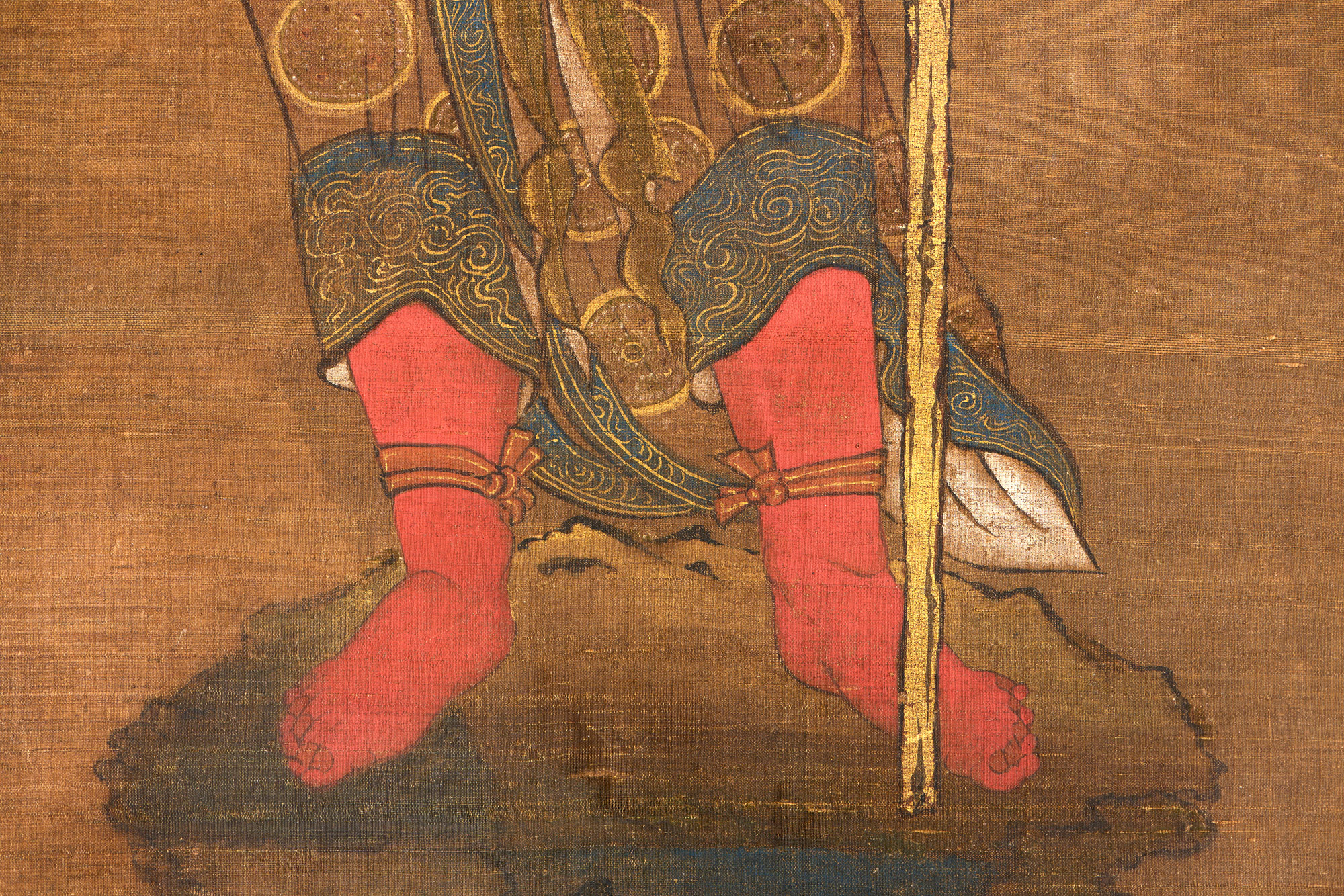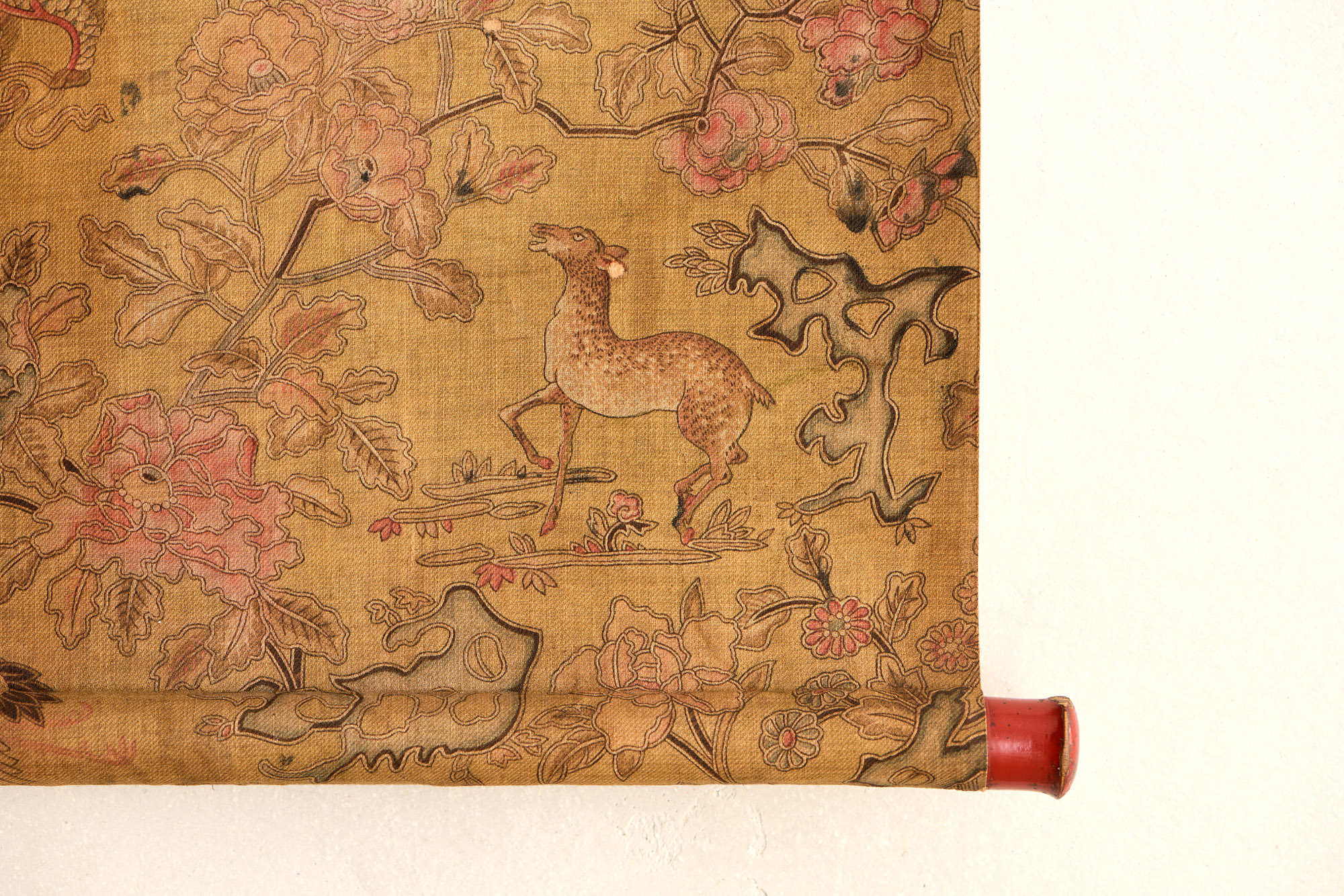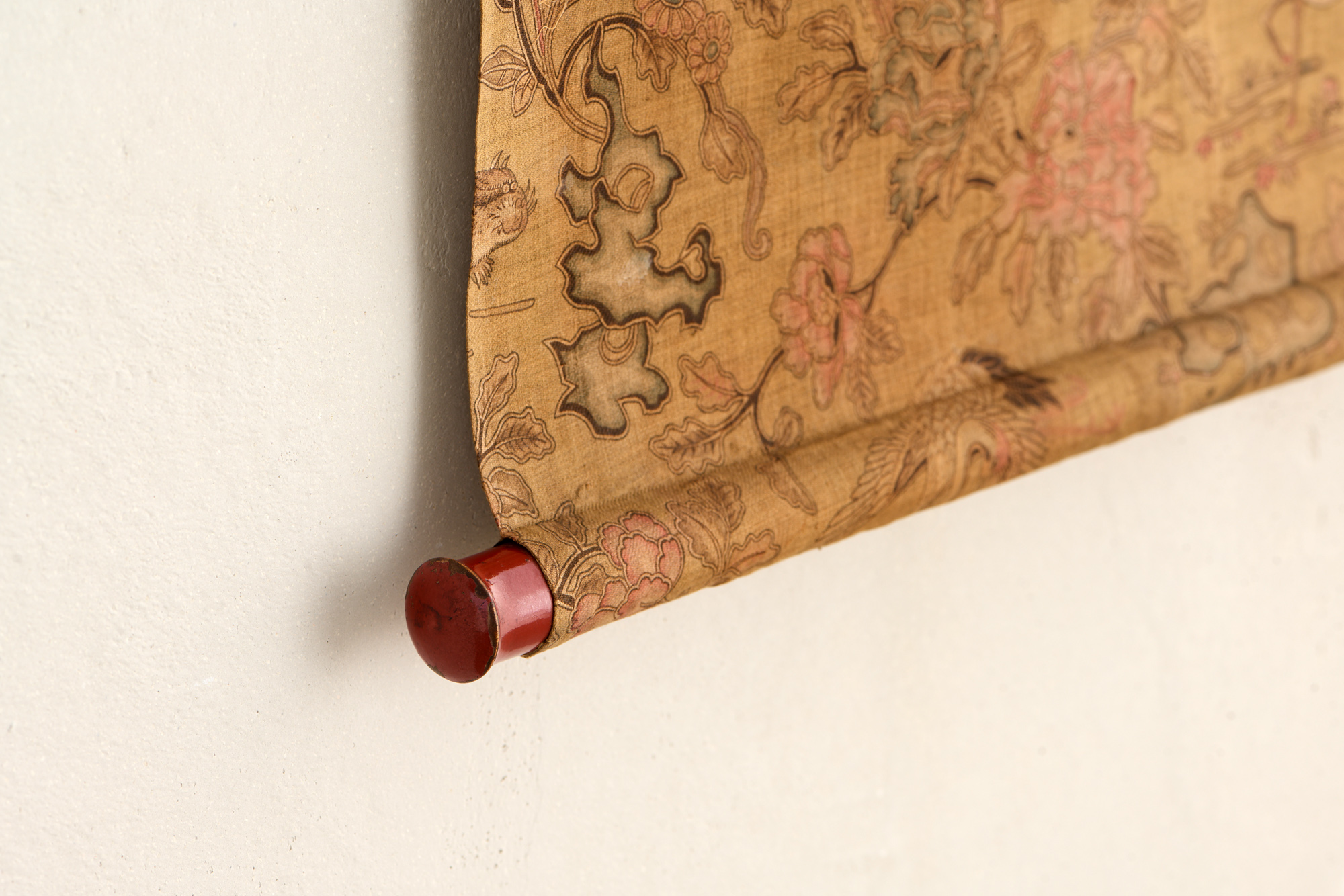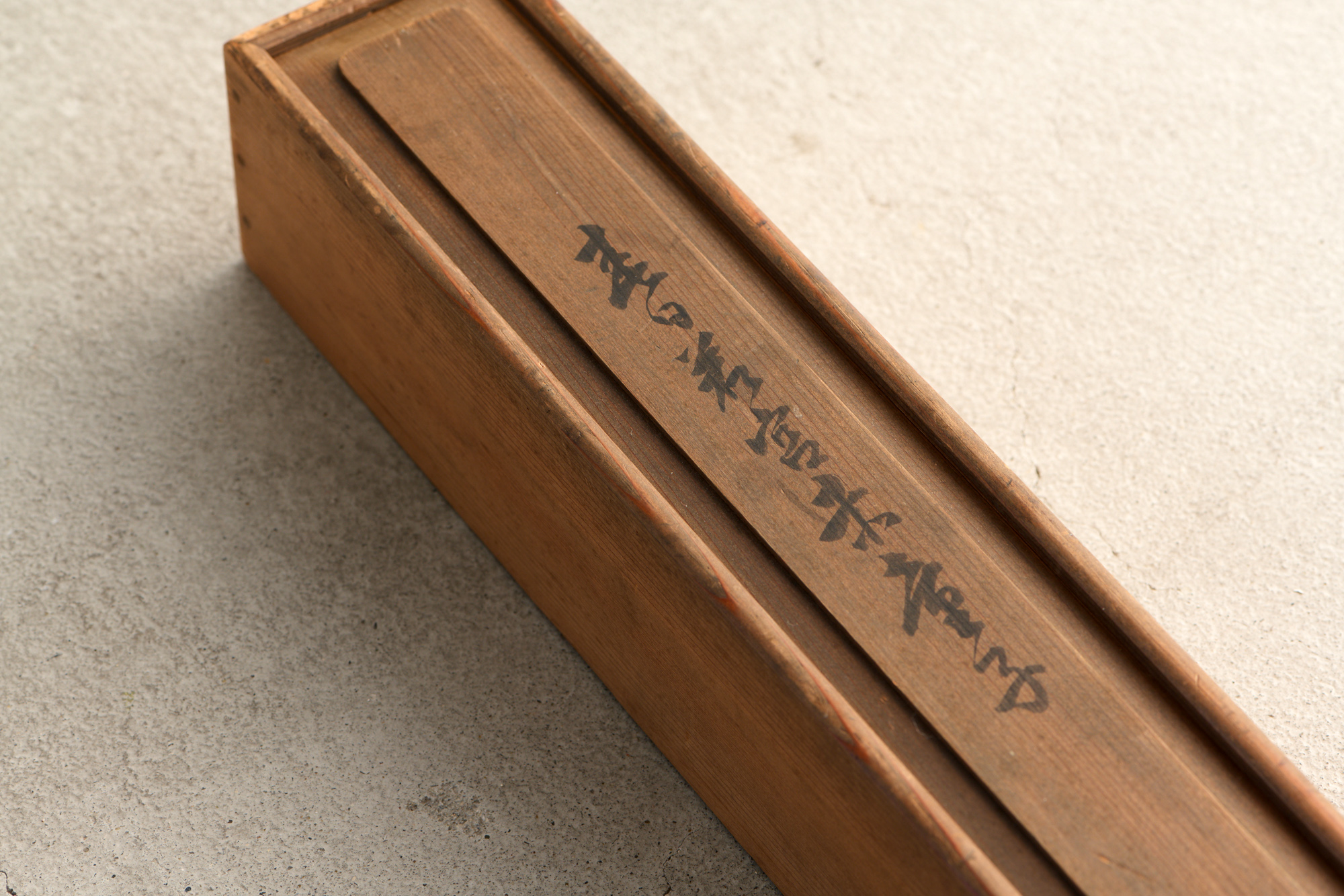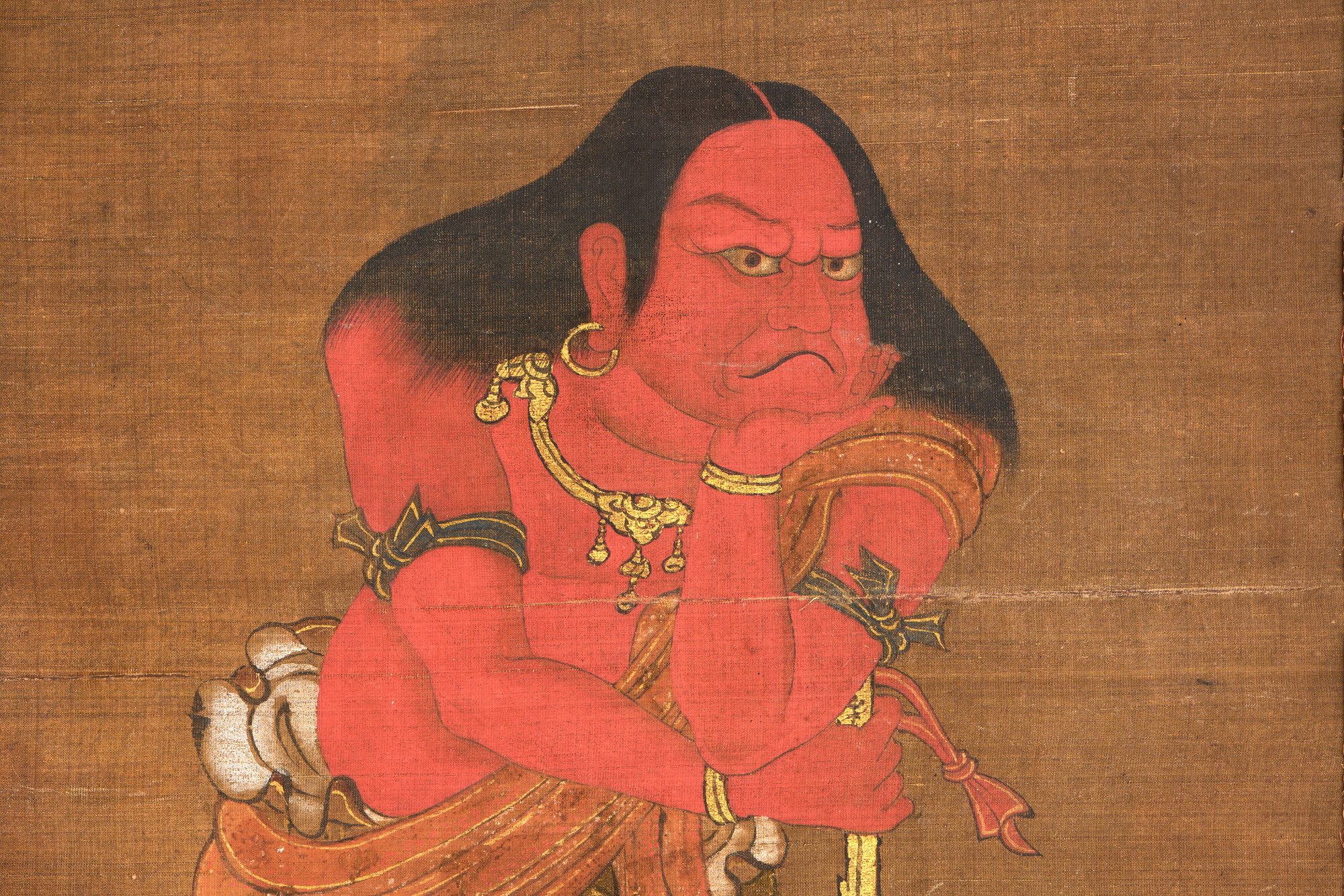
春日赤童子図
Rendering of Kasuga Aka Dōji
Completed
- Period
- Muromachi period (15th century)
- Provenance
- Private collection
- Sizes
- H. 1585mm W. 422mm (w/o shaft ends)<br />
- Accessories
- Wood box
The figure with the angry red skin gripping a staff and staring into the distance from his perch on a boulder is Kasuga Aka Dōji. The deity of Kasuga Shrine is said to be the protector of the Hossō, and its iconography is a syncretization with Seitakadōji, the guardian deity of Kōfukuji Temple, connected via suijaku since the Kamakura period.
After Wakamiya-sama returns from this world and Kasuga Shirne’s year-end event, On Matsuri, concludes, the mood shifts to the New Year and its major religious event, Shun-nichi-kō (*1). Prayers are offered for the safety of one’s family and peace in the coming year. At that time, the Kasuga Aka Dōji image or icon, along with the Kasuga Shrine Mandala and the Deer Mandala, is hung in the toko alcove of the household where the event is celebrated.
This particular icon was created by an artist of the Nanto-edokoro (*2), the school of artists who created high-quality religious paintings such as the Kasuga Shrine Mandala and the Deer Mandala. The image has been carefully rendered on silk of the fine texture typical of the Muromachi period. The deity’s face retains a scary look indicative of the era. It has since been removed, but if the inscription remained at the top of the image (the blackened part), it might be possible to confirm who possessed or created this work. However, there is no way of determining that now.
The opportunity to introduce a relic such as this image of Aka Dōji, which dates to the Mid-Muromachi period (15th century), is extremely rare, a so-called Blind Turtle’s Floating Tree. Moreover, one of the charms of this work is the stylish mounting, which appears to have been redone in the Early modern times.
(*1)
Religious events in Nara during the New Year. It is customary for Kasuga-kō’s caretakers, called Nenyo, to take the lead in enshrining the Kasuga Shrine Mandala, Deer Mandala, and Aka Dōji iconography in the toko alcove, and then visit Kasuga Shrine to offer Kagura. The events also serves to strengthen bonds among residents, through activities like banquets and introductions of new residents. The custom of Shun-nichi-kō still exists to some extent, and the Kasuga Shrine Mandala, which is held by the Minami City and Town Neighborhood Association, is designated as an important cultural property and is the finest example of such iconography.
(*2)
An organization of Buddhist painters belonging to Kōfukuji Daijō-in and Ichijō-in temples after the Kamakura period. The organization was composed of three schools: Handaza, Shonamiza, and Shibaza, artists who came from Kyoto and settled in Nara.
In addition to producing Buddhist paintings, artists were also involved in coloring Buddhist statues and decorating the interior of temples. Receiving salaries from the temples, artists responded to the demands of each of their branch temples. However, the style of painting did not progress beyond traditional norms and gradually stagnated. During the Muromachi period, Handasukeza was added to the three schools mentioned above, and each school continued to compete for the rights to serve the temples until the early Edo period.






